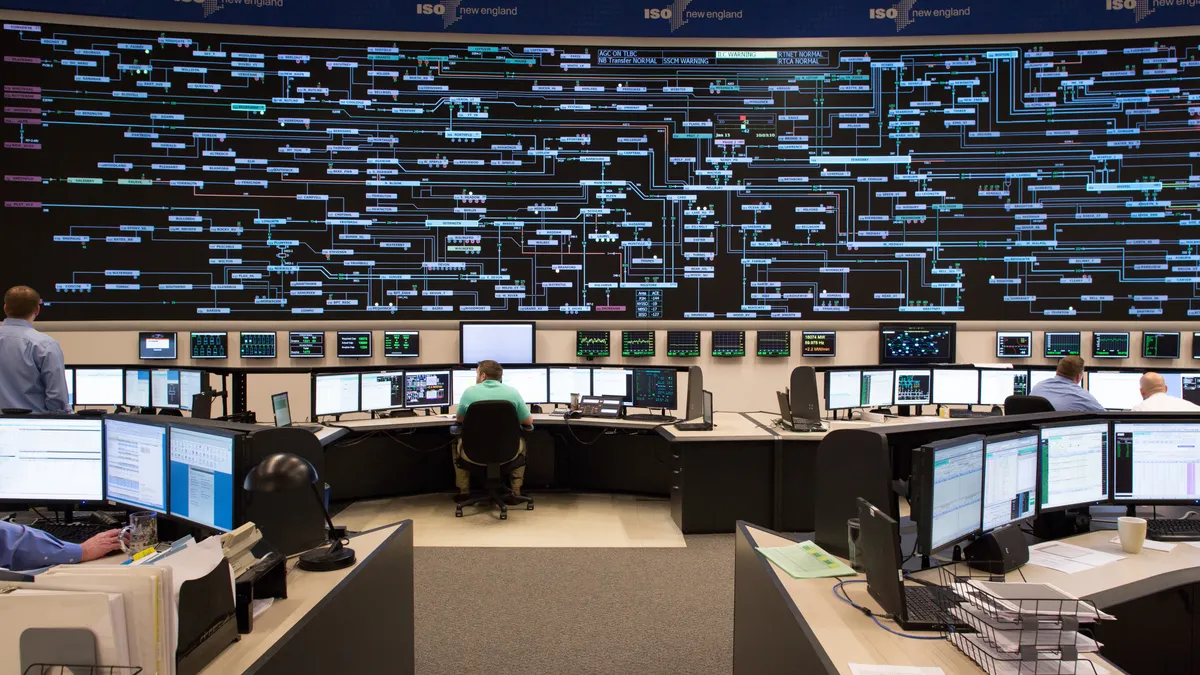Dive Brief:
- The electrification of heating and transportation end uses is expected to more than double the capacity of the New England electric grid over the next two decades, the region’s grid operator said Tuesday in its 2022 Regional Electricity Outlook.
- Maine could see its electricity use grow 2.6% annually through 2031, according to the report, while Vermont, Rhode Island, New Hampshire and Massachusetts may each see electricity use grow more than 1% annually.
- The New England ISO said it anticipates powering 1.1 million air-source heat pumps by 2031, and more than 1.5 million electric vehicles, potentially accounting for more than 3,000 MW of demand.
Dive Insight:
As New England adds large amounts of wind, battery storage and solar, some “balancing resources” will remain necessary for reliability, the grid operator said. But a look at the ISO’s interconnection queue gives a good idea of where the region’s power mix is headed.
Five years ago, the ISO’s generator interconnection queue was 48% natural gas, 44% wind and 6% solar, representing about 13 GW. In March of this year, it was 66% wind, 21% battery storage, 9% solar and 3% gas, for about 30 GW.
“The ISO remains certain that some resources will be necessary to balance renewable energy on a routine basis,” the report said.
The six New England states have recently focused on direct contracts with clean energy resources to develop the region’s green generation, but the ISO noted that these contracts “have not utilized the region’s competitive wholesale markets.”
“Stakeholders are currently determining if a consensus can be reached on market approaches to spur the development of clean energy,” according to the report. “It’s also necessary for the region’s energy stakeholders to consider how balancing resources will be compensated for their reliability value in a future system with significant amounts of renewable resources. This is particularly critical as older, fuel secure resources seek to retire.”
Approximately 7 GW of generation on the New England grid, mostly coal, nuclear and oil, has either retired or has announced plans to retire since 2013. And another 5 GW of coal and oil are “at risk of retirement,” the ISO said, even as these resources “have played an important role in recent winters when natural gas supplies are constrained.”
Substantial new transmission will also be necessary to add more renewables, according to the report – and the ISO has already approved nearly $12 billion in transmission investments since 2002.
According to the ISO’s regional system plan project list, roughly $1.3 billion in transmission reliability improvements are on the horizon through 2027 and three upgrades have been put in service in recent months.
As of June, the ISO counted 45 active transmission projects, including 17 in Massachusetts and 14 in Connecticut.















